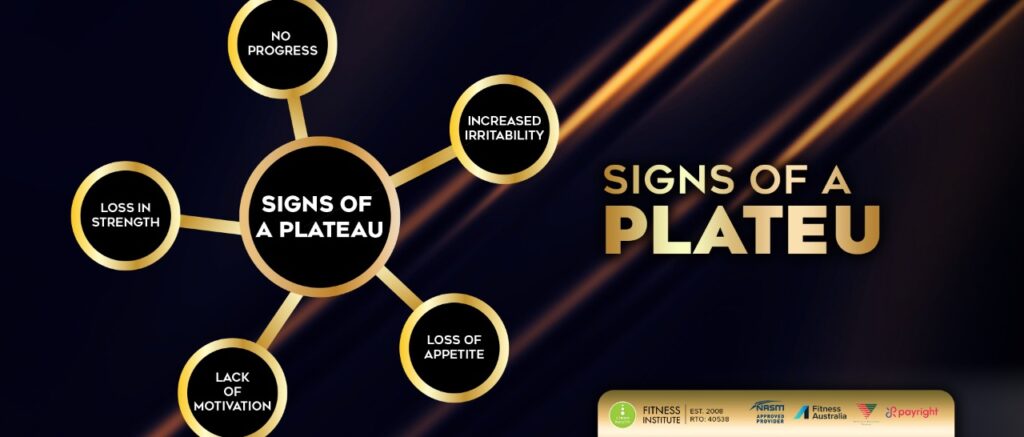
By Kimberley Leggett
As humans, we are incredibly adaptive creatures and as such, respond and adapt to different stimulus incredibly quickly. Historically this has been to ensure our survival when faced with threats or danger, however the same principal applies to everyday modern life – even in the gym. By understanding this mechanism and recognising the tell tale signs of negative adaptation, we can identify and help our clients push past plateaus to ensure they are continuously progressing towards their goals.
Everyone will eventually come to a point in their training when they notice their progress slow or stop whether it is overall performance, muscle gain, fat loss or increases in strength. A training plateau is when the client is no longer progressing in their workouts. They may be unable to add more weight to their sets or haven’t seen any muscle gain or fat loss for some time.
The frustrating part about hitting a plateau is that this could be due to a number of reasons – over-training, under-training, over-eating, under-eating, lack of workout structure or lack of program variety. Not knowing the contributing factor to why you are not seeing any changes can leave you even more confused and demotivated. Fortunately, there are some textbook signs which indicate that you have hit a plateau!
Hitting a plateau, which is when the body becomes accustomed to the stresses that are put upon it through dieting or weight training, is very common. We will notice plateaus when we do not modify clients’ training programs, nutrition plans or listen to biofeedback strategically. If you don’t give the body a reason to grow or change, it won’t!

Signs that your client has hit a plateau:
Lack of Motivation
Life happens to everyone, and this can often be due to factors outside of the gym such as personal matter or changes in interest. If these are not the reason, it’s most likely that a plateau could be caused by overtraining and the body (which is tired and doesn’t feel like training hard) telling the brain that it needs recovery and doesn’t want to train.
No Progress in your Program
Progression doesn’t have to be much, a few extra reps or 2% weight added to an exercise, but does need to be enough to trigger new growth. Even small increments or changes such as these lead to new muscle tissue growth, so when your client is training hard, eating appropriate calories to build muscle and prioritising recovery, there should be no issues progressing in their workouts.
If you notice that over 2 consecutive repetitions of the same workout, that are is no progression – this is a sign that the body has plateaued and ready for a different stimulus.
Loss in Strength
Similar to noticing a lack of progress in your program will correlate to loss in strength and decreased performance. These are signs that the body is not recovering adequately and cannot grow any new muscle tissue.
Increased irritability
You’ve heard the saying ‘hangry’ before – jokes aside, this can actually be a sign of plateau. If you notice that your client is feeling down, agitated or have lost their mojo when it comes to training it may a sign to rest. When we are stressed out, out body releases cortisol which hinders any muscle building we wish to achieve.
Loss of appetite
If the client is feeling stressed or their body feels overworked, the muscle receptor sites lose their sensitivity to accepting and shuttling glycogen into the muscles. When this occurs, we feel sluggish as all of our metabolic systems (digestion, nutrition partitioning etc) slow down.
If your client is experiencing any of the aforementioned signs, it may be a good time to reassess and re-strategise their training and nutrition plans to ensure continuous progress.
It may also be worth analysing the contributing factors that are driving the plateau. For instance:
Is it that they are not fully compliant with the program?
Is their body going through negative adaptations?
Is their body more insulin resistant and leptin insensitive?
Do they have any micronutrient deficiencies or gut dysbiosis?
Or, are they simply overtraining?
By getting to the root cause, it can be a lot easier (and a lot less frustrating) coming up wth some practical solutions!
Want to learn how to create world leading results with personal training clients and athletes for fat loss, hypertrophy, sports performance, well-being and more?
Register for the Ultimate Education Bundle and specialize in areas ranging from nutrition, training, programming & business!
References
Canadian Academy of Sports Nutrition. (2014-2020). Cause of Plateau. Retrieved from: https://www.caasn.com/braiatric-nutrition/plateau-in-weight-loss/causes-of-plateaus.html
Ianev, S. (2020). How to bust through Plateaus. Retrieved from: https://dev.cleanhealth.edu.au/how-to-bust-through-plateaus/






